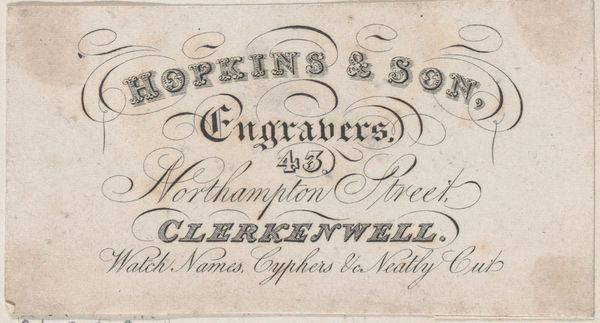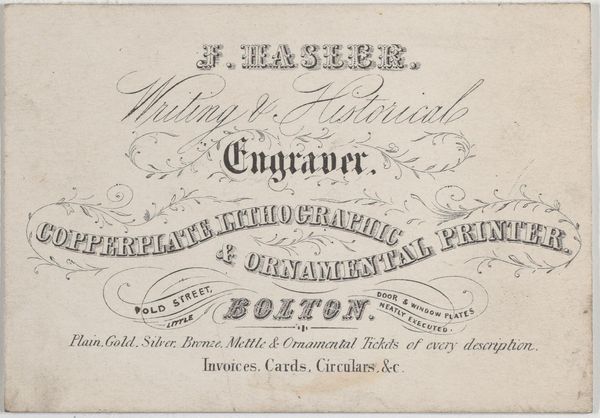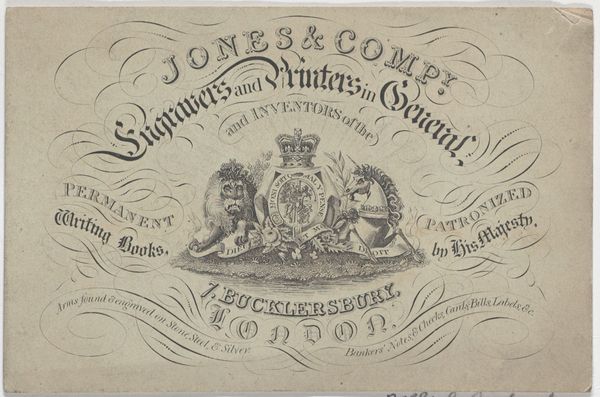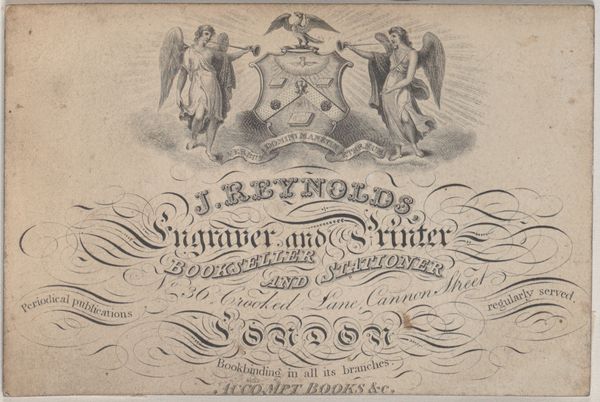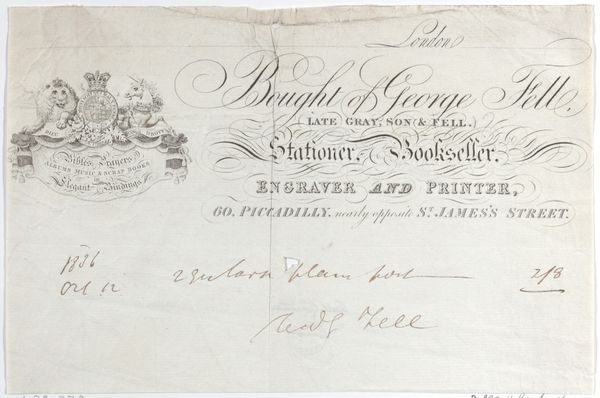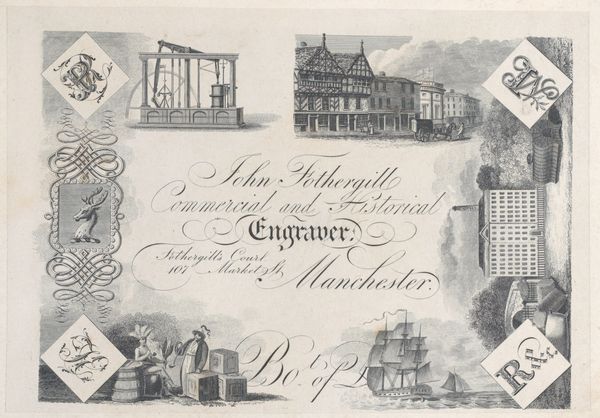
Trade Card for J. Crosland, Engraver, Printer, and Lithographer 1800 - 1900
0:00
0:00
drawing, graphic-art, lithograph, print, engraving
#
drawing
#
graphic-art
#
aged paper
#
lithograph
# print
#
engraving
Dimensions: Sheet: 2 7/16 × 3 9/16 in. (6.2 × 9 cm)
Copyright: Public Domain
Editor: Here we have a trade card for J. Crosland, dating sometime between 1800 and 1900. It’s an engraving and lithograph promoting Crosland's business as an engraver, printer, and lithographer in London. I’m struck by how detailed and ornate it is. What does this card tell you? Curator: It speaks volumes about the material conditions of the printing trade during that period. Look at the variety of services advertised – from maps and charts to "Bankers Checks & Bills" and "Door & Window Plates." This suggests a broad customer base and a flexible production process. How do you think the specific materials – stone, metal – informed the type of engraving and lithography Crosland offered? Editor: I hadn’t thought about it that way! So the materials dictated, in part, the kind of commissions Crosland could fulfill? The ability to engrave on both stone and metal meant he wasn’t limited to just one type of project? Curator: Exactly. Consider also the implications of offering "Heraldic Engraving." This implies catering to a specific social class, those who possessed or desired such status symbols. Furthermore, notice the address, “81 Cheapside, near the Old Jewry." The geographical location suggests something about his clientele and suppliers, doesn't it? What kind of materials might have been sourced nearby? Editor: Now I see! He was likely sourcing paper, inks, and other materials from local businesses. It really puts the trade card in a new light – as part of a larger network of production and consumption. Curator: Indeed. This isn't just advertising; it's a material object embedded within a complex economic and social fabric. Understanding these relationships helps us understand the art's value in its own time. Editor: I never considered a trade card as such a complex source of information about materials and production. Thanks!
Comments
No comments
Be the first to comment and join the conversation on the ultimate creative platform.
